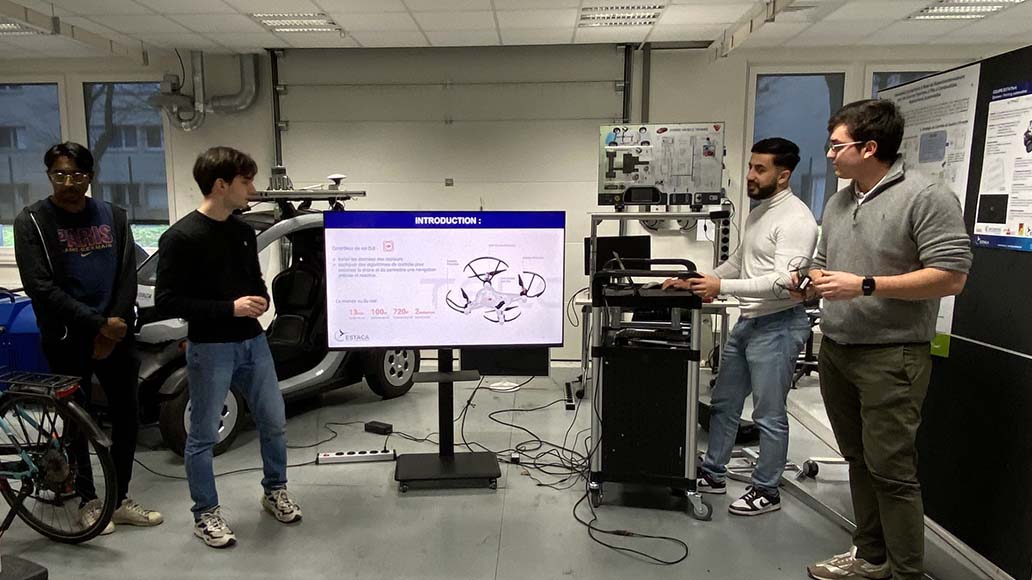Apprentice Students Work on a Swarm of Autonomous Drones

Students in their final year of an engineering apprenticeship presented a project for a swarm of autonomous drones to be used in difficult environments without GPS (fire, earthquake…). Innovative Technical Challenge.
During their studies, students on apprenticeship engineering courses specializing in vehicles, autonomous and connected systems, work on a range of practical projects to put into practice the technical and theoretical skills they have learned in class.
4 final-year students chose to develop an autonomous drone swarm project. The difficulty lies in the fact that aircraft have to move around in a complex environment, without the usual landmarks transmitted by GPS data
Mehdi Mcharek, the teacher-researcher supervising this project explains:
“In our project, we’re looking to control a swarm of drones, similar to those used in light shows, but for more complex scenarios. Currently, show drones use precise GPS systems for smooth navigation. However, in difficult environments such as post-earthquake rescue operations or fire response, GPS often proves unusable.
Our aim is to adapt a computer vision-based localization technique inspired by the latest advances in research. It relies on the detection and use of visual anchors in the environment to enable drones to locate themselves accurately and robustly, even in the absence of GPS signals.
In the second phase of the project, we aim to establish communication between the drones in order to share location information. Cooperation between them will not only improve location accuracy, but also ensure synchronized and robust navigation for all the drones.”
Urim, a student apprentice taking part in the project, says:
“What I liked about this project was the technical difficulty. Thinking and working for hours on concrete technical problems. And finding solutions! These few months enabled us to put our technical knowledge into practice, as well as our management and project management skills, which are essential for becoming an engineer. We came up against the difference between theory and practical application, and in the end, we were able to define the project’s progress and what it has taught us, but also what we still need to improve on.”













